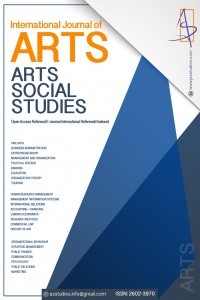SAĞLIK SEKTÖRÜNDE DENEYİMSEL PAZARLAMA UYGULAMALARININ MÜŞTERİ MEMNUNİYETİNE ETKİSİNE İLİŞKİN BİR ARAŞTIRMA
Bu araştırma ile sağlık sektöründe deneyimsel pazarlama uygulamalarının müşteri/hasta memnuniyetine etkisinin olup olmadığı varsa deneyimsel pazarlama modüllerinin hangi değişkenlere göre farklılaştığının ortaya çıkartılması amaçlanmıştır. Çalışmanın evrenini, 2022 yılında İstanbul ilinde faaliyet gösteren devlet hastaneleri ve özel hastanelerden hizmet alan ve ayakta tedavi gören hastalar oluştururken, araştırmanın örneklemini bu hastalar arasından rastgele yöntemle seçilen 620 hasta oluşturmaktadır. Bu çalışmada iki kısımdan oluşan bir veri toplama aracı kullanılmıştır. Katılımcıların demografik özelliklerini öğrenmek amacıyla araştırmacılar tarafından hazırlanan “Kişisel Bilgiler Formu” ve katılımcıların deneyimsel pazarlama uygulamalarından memnuniyet düzeylerini belirlemek üzere ise “Ayaktan Hasta Memnuniyeti Ölçeği” kullanılmıştır.
Sağlık sektöründe deneyimsel pazarlama uygulamalarının müşteri memnuniyetine etkisine yönelik yapılan araştırmaya katılan hastaların duyusal, duygusal, bilişsel, davranışsal ve ilişkisel deneyim algılarının bazı demografik özelliklerine bağlı olarak farklılaşıp farklılaşmadığı araştırılmıştır. Araştırmada ortaya çıkan sonuçlara bakıldığında katılımcıların deneyimsel pazarlama uygulamalarına ilişkin puanları oldukça bir birine yakın ve tümü de yüksek düzeyde memnuniyeti göstermektedir. Katılımcıların en çok memnun oldukları deneyim sırasıyla duygusal, bilişsel, duyusal , davranışsal ve ilişkisel deneyim olmuştur.
Anahtar Sözcükler: Deneyimsel Pazarlama, Deneyimsel Pazarlama Modülleri, Müşteri Memnuniyeti, Sağlık Sektörü Pazarlaması.
Anahtar Kelimeler:
Deneyimsel Pazarlama, Deneyimsel Pazarlama Modülleri, Müşetri Memnuniyeti, Sağlık Sektörü Pazarlaması
___
- Berry, L., & Beudapudi, N. (2007). Health care. Afertile field for services research. Journal of Service Research, 10(2), 111-122.
- Brakus, J., Schmitt, B., & Zarantonello, L. (2009). Brand Experience: What is it? How is it measured? Does it Affect Loyalty? Journal of Marketing, 73(05), 52-68.
- C., G., Spiller, N., & Noci, G. (2007). How to Sustain the Customer Experience: An overview of Experience components that co-create value with the Customer. European Management Journal, 25(5).
- Drosos, D., Tsotsolas, N., Zagga, A., & Chalikias,, M. (2015). Multicriteria SatisfactionAnalysis Application in the Health Care Sector. 7th International Conference on ICT in Agriculture, Food and Environment (s. 737-754). HAICTA.
- Ekinci, Y., Sarıkaya-Türk, E., & Preciado, S. (2013). Symbolic Consumption of Tourism Destination Brands. Journal of Business Research, 66, 711-718.
- Fornell, C., Johnson, D., Anderson, W., Cha, J., & Bryant, E. (1996). The American Customer Satisfaction Index: Nature, perpose and findings. Hournal of Marketing.
- Gautier, A. (2003). Think Again: Why Experiential Marketing is the Next Big Thing. NZ Marketing Magazine, 8.
- Gundersen, M., Heide, M., & Olsson, U. (1996). Hotel Guest Satisfaction Among Business Travellers: What are the important factors? Administration Quarterly, 37(2), 72-81.
- Hague, P., & Hague, N. (2016). Customer Satisfaction Survey: The Customer Experience through the customers eyes. Londra: Cogent Publication.
- Hauser, E. (2007). Experiential Marketing. 10 20, 2022 tarihinde Experiential Forum: www.experientialforum.com/content/view/112/48/, adresinden alındı
- Hill, N., Roche, G., & Allen, R. (2007). Customer Satisfaction: The Customer Experience through the Customers'Eyes. Londra: Cogent Publishing Ltd.
- Hoch., J., & Deighton, J. (1989). Managing what consumers learn from experience. Journal of Marketing, 53(2), 1-15.
- Holbrook, M. (2000). The Millenial Consumer in The Texts of our times: Experience the Entertainment. Journal of Macromarketing, 20(178), 178-192.
- Karagöz, N. (2016). SPSS ve AMOS uygulamalı nicel-nitel karma bilimsel araştırma yöntemleri. Ankara: Nobel.
- Karasar, N. (2017). Bilimsel Araştırma Yöntemi: Kavramlar, İlkeler ve Teknikler. Ankara: Nobel.
- Kotler, P. (2003). Markeitng Insights from A to Z: 80 concepts every manager needs to know. New Jersey: John Wiley&Sons.
- Kotler, P. (2006). Marketing Management. New Jersey: Pearson Education Inc.
- Lantos, G. (2018). Consumer Behavior in Action: Real life Applications for Marketing Managers. New York: NY:M.E.Sharpe.
- McCole, P. (2004). Refocusing Marketing to Reflect practice: The changing role of marketing for business. Marketin Intelligence and Planning, 22(5), 531-539.
- Mehta, P. (2015). Reconceptualizing mix elements for Health Services. Researchgate: www.researchgate.net/publication/285089711 adresinden alındı
- Norton, D. (2003). Toward Meaningful Brand Experience. Design Management Journal, 1-10.
- Oliver, R. (1979). Product Satisfaction as a function of prior expectation and subsequent disconfirmation: New Evidence. Bloomington: Indiana University.
- Phillip, B., & Hazlett, J. (2017). Welcome to the Experience Economy. Harvard Business Review, 76, 97-105.
- Pine, B. J., & Gilmore, J. H. (1998). Welcome to the Experience Economy. Harvard Business Review, 76(4), 97-105.
- Poulsson, S., & Kale, S. (2004). The Experience Economy and Commercial Experiences. The Marketing Review, 4(3), 267-277.
- R.L., O., & DeSarbo, W. (1988). Response Determinants in Satisfaction Judgements. Journal of Consumer Research, 495-507.
- Same, S., & Larimo, J. (2012). Marketing Theory: Experience Marketing and Experiential Marketing. Business and Management, 481-487.
- Schmitt, B. (1999). Experiential Marketing. Journal of Marketing Management, 15(1-3), 53-67.
- Schmitt, B. (1999). Experiential Marketing: How to Get Customers to Sense, Feel, Think, Act and Relate to your Company and Brands. New York: Free Press.
- Schuler, L. (2004). Experiential Marketing: Changing the way you relate to brands. Experiential forum: http://experientialforum.com/survey/AWBWEMF.pdf adresinden alındı
- Shaw, C., & Ivens, J. (2002). Building Great Customer Experiences. New York: Palgrave Mc Millan.
- Sheu, J., Su, Y., & Chu, K. (2009). Segmenting Online Game Customers-The Perspective of Experiential Marketing. Expert Systems, 36(4), 8487-8495.
- Smilansky, S. (2009). Experiential marketing: a practical guide to interactive brand experiences. Londra: Kogan Page.
- Solomon, M. (1994). Consumer Behaviour. Boston: Ally and Bacon.
- Taylor, S. (1994). Distinguishing Service Quality from Patient Satisfaction in Developing Healthcare Marketing Strategies. Hospital and Health Services Administration, 39(2), 221-236.
- Whelan, S., & Wohlfeil, M. (2006). Communicating Brand Through Engagement with "lived" Experiences. Brand Management, 13(4-5), 313-329.
- Wilson, T. D. (1994). Information needs and uses: fifty years of progress. Journal of Documentation Review, 15-51.
- Wolburg, J. (2014). Lifestyle Brands: AGuide to Aspirational Marketing. Journal of Consumer Marketing, 31(4), 331-332.
- Yöyen, E. (2020). Araştırma Yöntemlerine Giriş. Ankara: Nobel.
- Zarantonello, L., & Schmitt, B. (2010). Using the Brand Experience Scale to Profit the Consumers and Predict Consumer Behavior. Brand Management, 17(7), 532-540.
- Başlangıç: 2018
- Yayıncı: Menekşe ŞAHİN KARADAL
Sayıdaki Diğer Makaleler
Organizational Justice İn Universities- A Comparison in Turkey
İbn Battûta et-Tancî’nin Seyahatnâmesinde Maverâünnehir ve Maverâünnehir Sultanları
SAM SHEPARD’IN GÖMÜLÜ ÇOCUK OYUNUNDA KİMLİK, CİNSİYET VE ŞİDDET
Halil İbrahim ÖZKAN, Tuba KANCI
